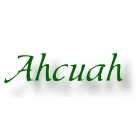If you hike barefoot as much as I do, it is inevitable that at some point you will step on a thorn. Here are some thoughts on that.
First, it is pretty rare, particularly on established trails. Occasionally a bramble or something will drape across a trail, or trail maintenance will cut back the sides of a trail and leave thorny detritus on the trail. However, usually when I step on a thorn, it’s when I’m bushwhacking, off trail. I do have to mention, though, when I hike off-trail, I often draw blood. However, it’s not on my soles: it’s scratches on my legs, arms, and hands. In fact, probably my worst ever thorn “injury” was in the fleshy part of my thumb, when it got snagged on a green briar I was trying to get past.
Second, what usually happens when I step on a thorn is that it goes in, I feel it a bit, and then it comes right back out. This is what happens when the branch the thorn is on is fresh. The thorn only seems to break off when it was attached to an old twig and it has gotten brittle. When I have a thorn go in and out, I never even seem to draw blood. I think they only go in far enough to stimulate the nerves, but not deep enough to hit any blood vessel.
The thorns I have to deal with around here are mainly from green briars, multiflora roses, and brambles of some sort (raspberries, blackberries, etc.). All these thorns are not very long. There also is the honey locust, which had disgusting one-inch spikes. Hint: do not step on these. If you see a honey locust in the area, tread very, very carefully!
Occasionally, a brittle thorn will break off in my sole. Usually, I won’t even notice it, but if I do, it’s after walking quite a bit further and realizing that I am feeling a bit of a twinge whenever I put my foot down a certain way. If I don’t feel like stopping right then and there to so something about it, I’ll just adjust my step (putting more weight on either the right or left surface of my foot) so as not to feel it until I do feel like stopping. This usually works out just fine (if it doesn’t, I’ll stop immediately). Sometimes I won’t notice a thorn until long after I get home. Obviously, this is one that didn’t penetrate past my thick leather soles.
Getting out thorns is pretty easy, and as I’ve mentioned before, I’ve rarely drawn blood doing so. Usually, the thorn will leave a bit of its base sticking out of the skin. In that case, your fingernails might be enough to pull it out. The tapering of thorns really aids in taking them out. If your fingernails are not enough, you might have to use a tweezers. I do carry one with me when I go hiking (and I’ve probably used it, what?, 4 times in as many years). Tweezerman makes a very nice pair of pointed tweezers, but you can also get a nice pair of pointed stainless steel tweezers at any hardware store. You do want the ones with fine (and strong) points, not the slanted type.
Another technique that often works without tweezers takes advantage of the tapered shape of the thorn. What you do is put the fingernails of your thumbs on each side of the thorn, and then, while squeezing, move your thumbs back and forth perpendicular to the squeeze. The following picture tries (badly) to depict that:

Working out a thorn
This will usually get the thorn to protrude enough to grab it.
If not, you may have to go digging. If so, dig a bit, squeeze a bit, dig a bit, and eventually you will be successful.
Yes, thorns do occasionally happen when you hike barefoot. But the minor, momentary discomfort is more than made up for by the utter delight, freedom, and sensual input.
Read Full Post »


